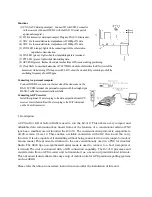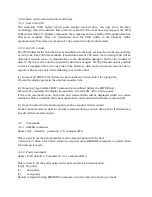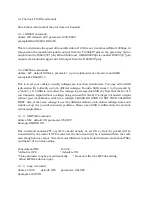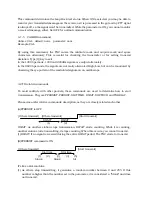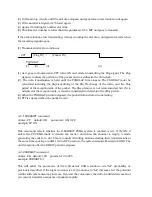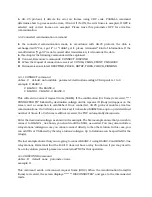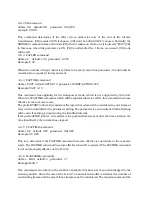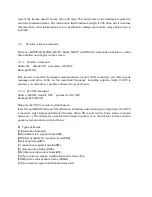
Functions
(1) CN1 (for PC data input/output): Connect W1 to DSUB-9 connector
on the rear side.(Connect DSUB-9 with the RS-232C serial port of
a personal computer.)
(2) W2 (for transceiver data input/output): Plug into CN107 of transceiver.
(3) VR1: For the modulation level adjustment of 9600bps TX data
(4) VR2: For the modulation level adjustment of 1200bps TX data
(5) CON LED (orange): lights while connecting with the other station
in packet communication.
(6) STA LED (green): lights when the transmitting data is remained.
(7) PTT LED (green): lights while transmitting data.
(8) GPS LED (green): flashes when data reaches from GPS receiver during positioning.
(9) Clock Shift: In case that harmonics of 7.9872MHz clock should interfere the RX circuit of the
transceiver while turning ON the power of EJ-41U, short the clock shift by soldering to shift the
oscillating frequency about 200ppm.
Connecting to a personal computer
Connect DSUB-9 connector on the rear side of the transceiver to the
RS-232C COM terminal of a personal computer with the straight-type
DSUB-9 cable that is commercially available
Connecting to GPS receiver
Install the optional 3.5ø stereo plug to the data output line from GPS
receiver. Insert the modified 3.5ø stereo plug to the DATA terminal
on the front of transceiver.
1.
Description
A CPU with 4 KB of built-in RAM is used to run the EJ-41U. This allows a very compact and
affordable data communications board. Some of the features of a conventional external TNC
(such as a mailbox) are not found in the EJ-41U. The communication protocol is compatible to
AX.25 version 2 Level 2. This enables a reliable connection with CRC check and the re-try
function. It is also capable of transmitting without being connected to a node (unproto mode or
beacon mode). This protocol is identical to the one conventionally used in a TNC for Amateur
Radio. The 9600 bps non-synthesized serial mode is used to connect to a host (computer or
terminal). The unit is enhanced with a GPS connection capability. The EJ-41U processes and
converts data from a GPS receiver and re-transmits it as a beacon at predetermined intervals.
This advanced feature allows the easy setup of mobile units for
GPS position-reporting systems
such as APRS.
Please refer the Alinco transceivers’ instruction manual for the installation of this unit.


